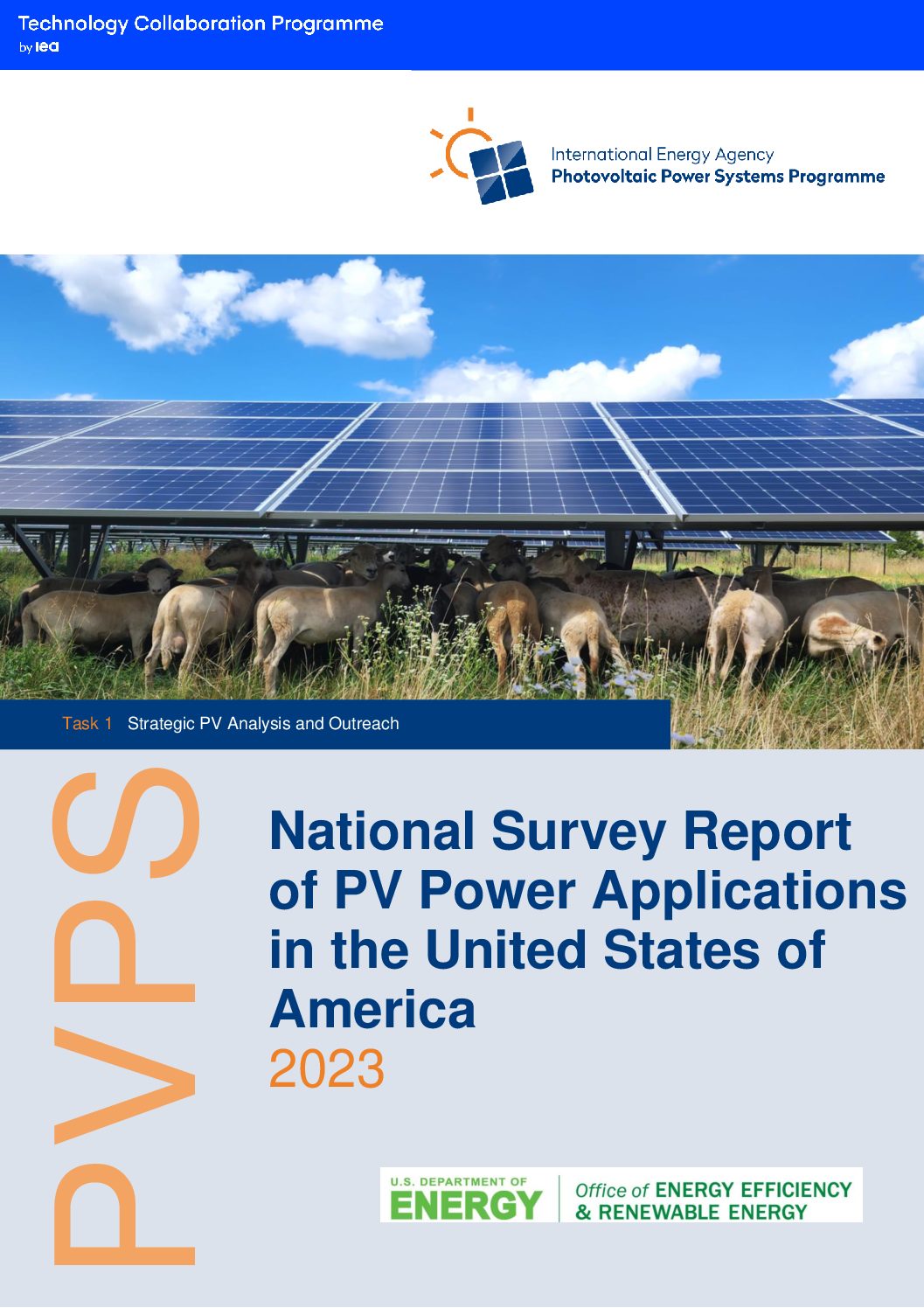This report provides an in-depth analysis of the USA’s PV market and developments over the past year. This comprehensive report is part of IEA PVPS Task 1, which aims to promote and facilitate the exchange of information on the technical, economic, and social aspects of PV power systems.
Key Highlights of the Report:
- Record Installations: In 2023, the U.S. experienced a remarkable year for solar energy deployment, with a total of 26.3 GWac of new PV capacity installed. This represents a significant growth compared to previous years, marking the country’s continued leadership in solar energy.
- Decentralized and Centralized Systems: The report distinguishes between decentralized (residential, commercial, and industrial) and centralized (utility-scale) PV systems. Utility-scale projects alone contributed 18.4 GWac to the total capacity in 2023, while decentralized systems added 7.9 GWac.
- Community Solar: The U.S. installed 1.04 GWac of community solar projects, continuing to grow in popularity across the country. Cumulative capacity of these projects reached 7.2 GWac, highlighting the increasing participation of communities in solar energy generation.
- Competitiveness: PV module prices and system costs remained unsettled in 2023, with residential prices declining and utility-scale prices rising. The average price of residential PV systems stood at $2.49/W, while large centralized systems saw average costs of $1.16/W. Nonetheless, PV remained the cheapest form of energy generation.
- Policy Support: The report underscores the role of national and state-level policies, particularly the Inflation Reduction Act (IRA), which introduced extensive tax credits and incentives for solar installations and manufacturing. These policies have catalyzed solar growth and are expected to drive even more rapid deployment in the years ahead.
- Looking Forward: The report concludes that solar energy will play a crucial role in the U.S.’s path to achieving its climate goals, including the Biden administration’s target of a carbon pollution-free power sector by 2035. With continued policy support and technological advancements, the U.S. solar market is poised for further growth, both in large-scale projects and residential applications.
